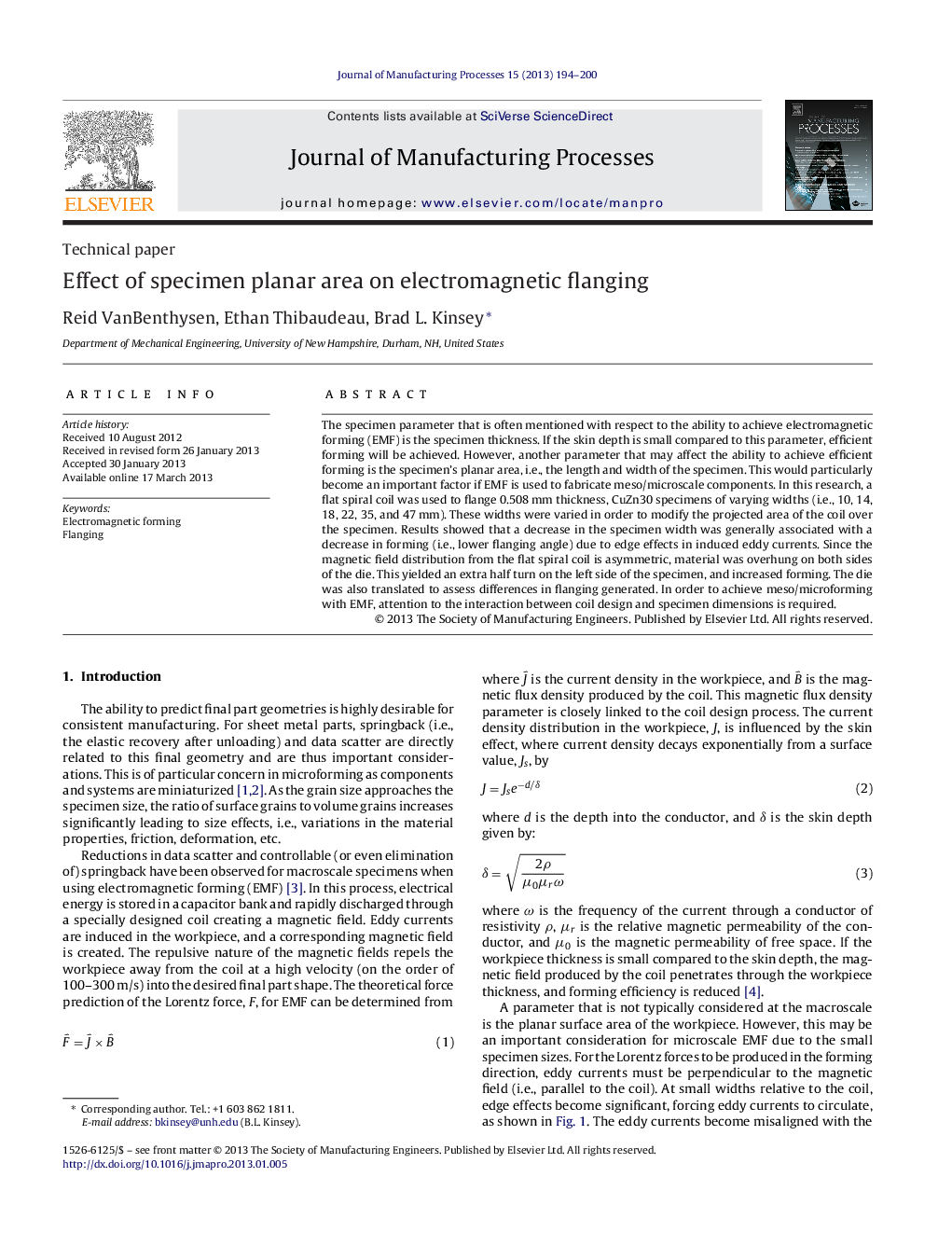| Article ID | Journal | Published Year | Pages | File Type |
|---|---|---|---|---|
| 1697081 | Journal of Manufacturing Processes | 2013 | 7 Pages |
The specimen parameter that is often mentioned with respect to the ability to achieve electromagnetic forming (EMF) is the specimen thickness. If the skin depth is small compared to this parameter, efficient forming will be achieved. However, another parameter that may affect the ability to achieve efficient forming is the specimen's planar area, i.e., the length and width of the specimen. This would particularly become an important factor if EMF is used to fabricate meso/microscale components. In this research, a flat spiral coil was used to flange 0.508 mm thickness, CuZn30 specimens of varying widths (i.e., 10, 14, 18, 22, 35, and 47 mm). These widths were varied in order to modify the projected area of the coil over the specimen. Results showed that a decrease in the specimen width was generally associated with a decrease in forming (i.e., lower flanging angle) due to edge effects in induced eddy currents. Since the magnetic field distribution from the flat spiral coil is asymmetric, material was overhung on both sides of the die. This yielded an extra half turn on the left side of the specimen, and increased forming. The die was also translated to assess differences in flanging generated. In order to achieve meso/microforming with EMF, attention to the interaction between coil design and specimen dimensions is required.
